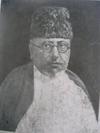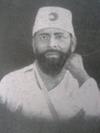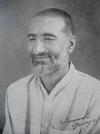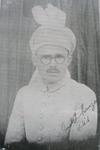Muslims and India's Freedom Struggle
When India launched on its struggle for freedom from British rule, its two major communities, the Hindus and the Muslims, joined in it with equal enthusiasm, like they had done so during the First Indian War of Independence in 1857. The Indian National Congress was formed in 1885. Nationalist leaders from all communities participated in its activities in the first four decades of its existence. Indeed, its second President was a Muslim, Badruddin Tyabji. Soon after the first World War, Mahatma Gandhi emerged as the leader of the Indian freedom movement. It was he who set the Congress on a mass militant but non-violent course. Till then, the organization had been largely an elitist protest movement against the denial of rights and opportunities to qualified Indians to participate in the governance of the country in order to ensure that India's interests were not subverted to those of Britain. Under Gandhi's inspired leadership, the social base of the Congress was widened and it acquired the character of a mass national organization. Meanwhile, in pursuit of their worldwide imperial interests the British decided to dissolve the Islamic Caliphate in Turkey. The repression let loose in Muslim countries in the wake of this decision caused a stir in the Indian Muslim community which launched its own separate movement against the British, referred to as the Khilafat. Mahatma Gandhi, who perceived that the common impulse behind both movements was nationalism, called for a united effort. The Indian National Congress made common cause with the Khilafat, and leaders of the two organizations conducted a common struggle against British imperialism. Among the most steadfast freedom fighters were the Pathans of undivided India's North-West Frontier Province (NWFP), now a part of Pakistan. Led by their austere leader, Khan Abdul Ghafar Khan, who was popularly known as Frontier Gandhi, the Pathans were throughout uncompromising in their opposition to British rule. Since NWFP was a sensitive border area, the British had to employ even more repression here than elsewhere in the country. They resorted to strong-arm methods to suppress the Khudai Khidmatgars, the soldiers of the disciplined and non-violent militia raised by the Khan. Thousands of these volunteers were victims of this repression. They not only spent years in British prisons but fell victims to their batons and bullets.
Phase of Hindu-Muslim Unity
During their joint struggle against the British, the Hindus and Muslims transcended their sectarian differences and interests. In this period, even Muslim separatist leaders paid tribute to the ideal of Hindu-Muslim unity. Enthusiastic scenes of fraternity and amity between the two communities were witnessed allover the country. These events greatly encouraged and strengthened the Muslim nationalist leadership allover the country that is now manifest in all the major secular political parties of India. These developments were a direct challenge to the British hegemony over India. Anxious to reassert their hold over the country they took recourse to the application of the classical imperial policy of divide-and-rule by playing up sectarian differences between the two communities. Unfortunately, this succeeded largely owing to personal rivalries and animosities between the leaders of the movement. The feudal elements among Muslims, as well as the conservative and rigidly orthodox among the Hindus, who enjoyed considerable prestige and influence in their respective communities gradually drifted away from the truly nationally inspired national movement. The hard core of nationalist Muslim Leaders, however, remained solidly united with their Hindu colleagues in the Congress. Outstanding among them were Maulana Abul Kalam Azad, Abbas Tyabji, Rafi Ahmed Kidwai, Maulana Hussain, Ahmed Madani and Maulana Hifzur Rehman. The Muslim separatists set up the All-India Muslim League and claimed that it was the only political party representing the Muslim minority in the country. But the League was an avowedly sectarian body. In course of time, it developed into an all-India organization which competed with the Congress for the vote of the Indian Muslims. As the League grew in strength, it evolved a novel theory that the Hindus and Muslims in India were two distinct nations. The next step was its demand for a separate homeland for Indian Muslims to be carved out of the territory of India. After World War II when the British, under the pressure of India's demands for freedom, agreed to withdraw from the country, the Muslim League insisted on partition. The Congress had always opposed the theory that Hindus and Muslims in India constituted two separate nations. It had set its face against the proposal to divide the country into a Hindu India and Muslim Pakistan. However, committed as it was to democratic principles the British rulers were able to prevail upon it to accept the proposition that "unwilling parts of the country" could not be compelled to remain in the Indian Union. Also, because it wished to obtain independence for the subcontinent from British rule as early as possible, the Congress had ultimately to accept that the predominantly Muslim provinces of India's northwest and the east could secede to form the new state of Pakistan.Excerpted from "Indian Muslims", a Government of India Publication, 1972
![]()
See Also:
- Indian Muslims -- There are 180 million practicing Muslims in India. A photographic exhibit depicting a cross section of Indian Muslim communities; includes pictures of Daldis, Navayatis, and Islamic mystics.




